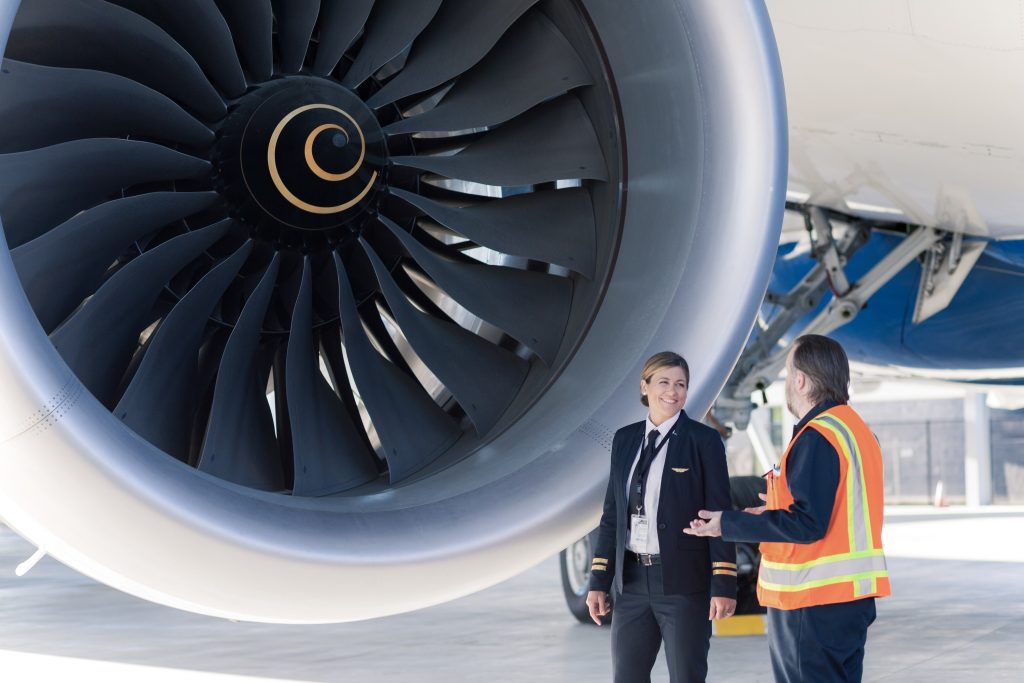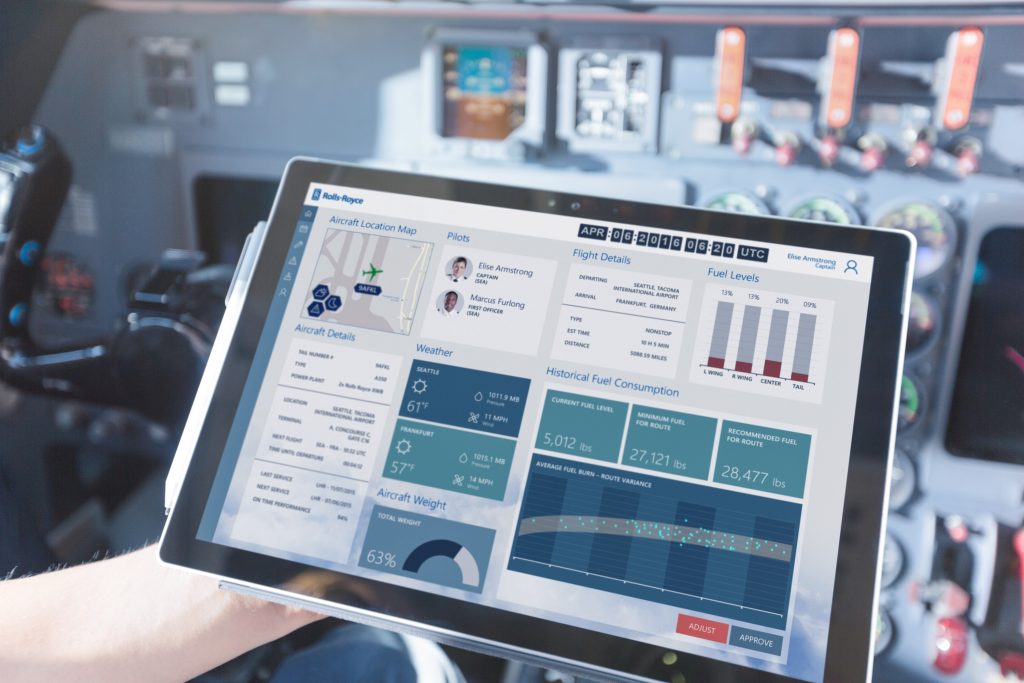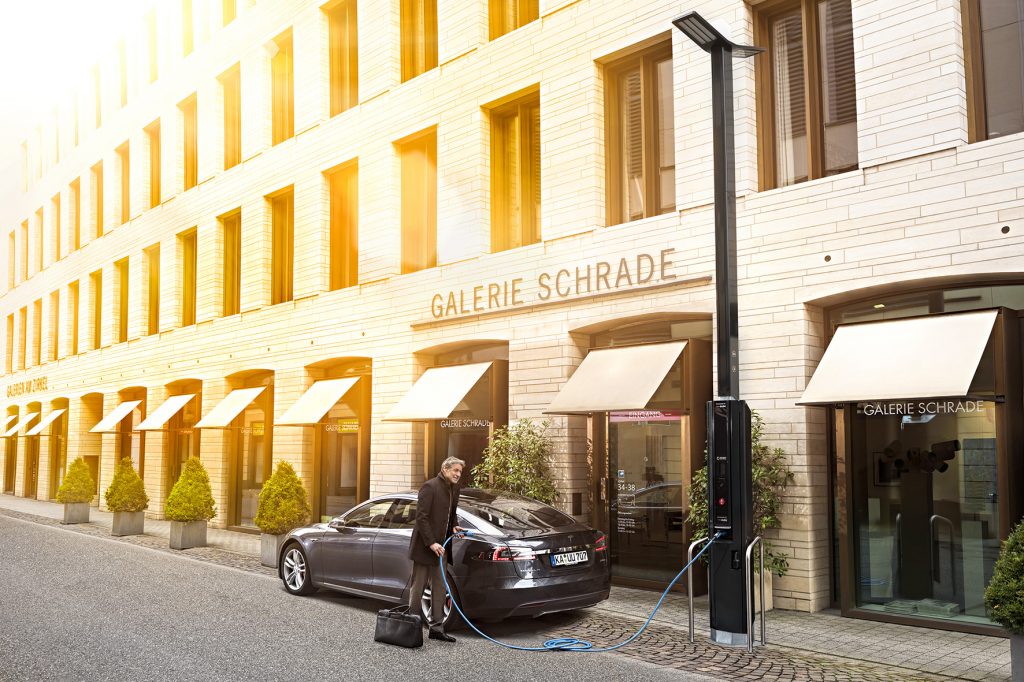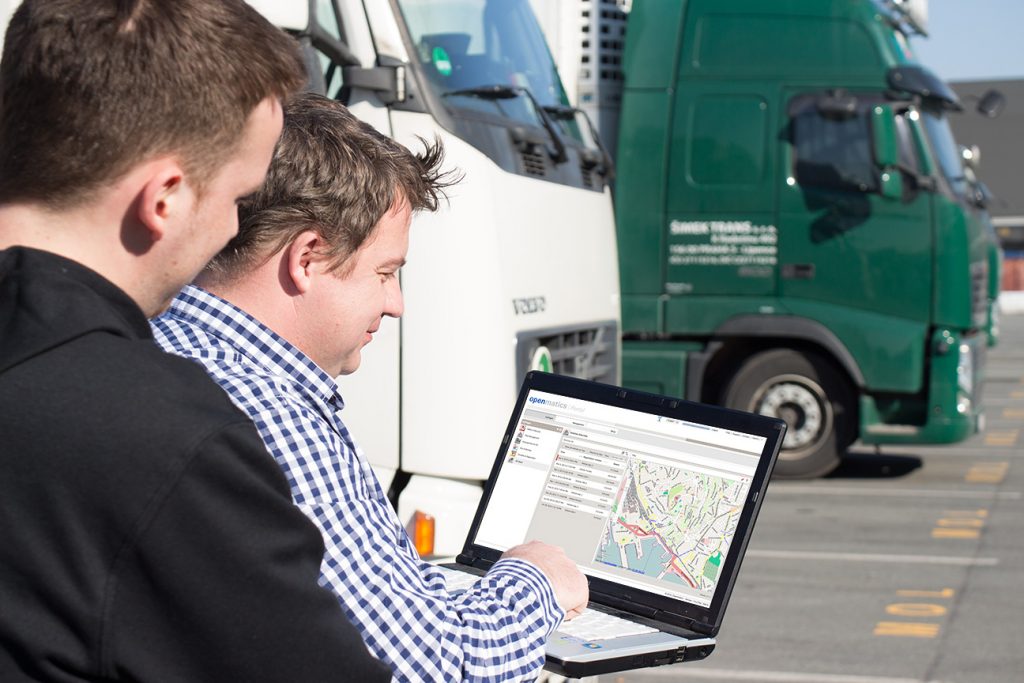From airplane engines to street lights, transportation is becoming more intelligent
Airlines around the world are eager to take advantage of rapidly emerging technologies to improve their passengers’ experience and become more efficient. But while executives recognize the opportunities, they know they can’t do it alone.
Enter Rolls-Royce and Microsoft. The two industry leaders in aircraft engines and technology are collaborating to offer carriers their expertise and ideas in a business where cutting 1 percent of fuel usage amounts to $250,000 in annual savings per plane. A recent PricewaterhouseCoopers report estimates digital tools in aircraft maintenance could save more than $100 million a year for a large carrier with a fleet of about 500 planes.
“Our TotalCare maintenance program was revolutionary in the ‘90s, so we’re pioneers ourselves, and by collaborating with a fellow pioneer like Microsoft, we can absolutely bring innovative digital solutions to airlines now,” says Alex Dulewicz, head of marketing for services at Rolls-Royce’s civil aerospace division. “We see real value in collaborating with an organization that is already leading the way with its established software capabilities and data analytics.”
Under the TotalCare program, airlines began paying Rolls-Royce for the hours they were able to fly rather than for repairs. That made the concept the first in the industry to align airlines’ goals with an engine maker’s, namely having a plane in the air as much as possible. TotalCare proved “hugely successful,” Dulewicz says, and more than 90 percent of the carriers that use Rolls-Royce engines are signed up for the maintenance plan.
In the meantime, not only has the world changed thanks to technological leaps, but the bar has been raised for engine makers to continually minimize costly ground disruptions to airlines’ operations, Dulewicz says.
Intelligent evolution in service
So now, he says, it’s time for the next evolution in service, moving beyond the current model that monitors engine health to head off potential problems, to one that will proactively help the airlines use their equipment more efficiently. To that end, Rolls-Royce will integrate Microsoft capabilities into its new Service Solutions program, helping airlines get the most out of their engines by analyzing the vast amounts of data generated during each flight to come up with ways to reduce fuel usage, better plan maintenance to decrease downtime, and improve retention of the engine asset value.
Today’s engines have hundreds of sensors and signals that transmit gigabytes of data for each flight. With more than 85 airlines flying planes equipped with Rolls-Royce’s Trent engines, the company monitors 50,000 flights a month, or 14 million flight hours every year. That means processing, analyzing and storing terabytes of data across the engine fleet. And that figure will keep growing as Airbus and Boeing increase production to work through a record backlog of aircraft orders. Rolls-Royce projects there will be about 7,500 of its Trent engines powering planes in a decade, up from about 4,600 in 2015.
To make sense of all that data, along with the weather, route restrictions and air traffic control requirements that affect performance, Rolls-Royce is turning to Microsoft’s Azure cloud-based services for information gathering and storage. And then Microsoft’s Azure Stream Analytics, Machine Learning and Power BI will help Rolls-Royce make recommendations to airline executives on the most efficient way to use their engines in flight and on the ground.
And with up-to-date information about how an engine is performing during a flight, mechanics can be ready to jump into action and start on repairs as soon as the plane gets to the gate – almost like a race-car pit crew – which is crucial for avoiding delays when flight plans include tight turnaround times at airports.
“This collaboration will create new digital services for Rolls-Royce to deliver an even better service to customers,” says Jason Zander, corporate vice president of Microsoft Azure.
As Rolls-Royce expands beyond making and maintaining engines into digital services, the benefits to the industry promise to be significant. The company estimates that only 4 percent of the $60,000 it costs an airline to operate a typical flight is spent on maintenance, whereas up to 40 percent goes toward fuel.
Transforming aircraft efficiency and on-time performance through data analytics will help Rolls-Royce customers not only save money but also improve their operations. And that ultimately means more reliable, comfortable and less expensive flights for passengers and cargo.
Smart streetlights and cars
Air travel isn’t the only mode of transportation benefiting from the new digital landscape – it’s the ground game, too. Traffic jams and pollution will begin to ease in some cities as they install new street lamps built by SM!GHT smart.city.light, a unit of German electric utilities company EnBW.
SM!GHT uses Microsoft technology for an Azure cloud-based network of intelligent streetlights that not only provide electric-vehicle charging stations, Wi-Fi and SOS buttons, but can also sense pollution, noise, temperature, humidity and traffic congestion. All that data gets analyzed in real time using Azure Stream Analytics and Machine Learning and relayed to city planners or traffic control systems to help divert or slow down drivers, unsnarling the commute and improving neighborhoods’ air quality.
SM!GHT sales began in October 2015, and the streetlights are already in use in German, Swiss, Norwegian and Australian cities, says Matthias Weis, the head of the program.
“The more SM!GHT bases we sell, the more data we will have and the more interesting it will become, as we work to expand this solution with other technology,” Weis says.
Intelligence and connectivity are being used to better manage charging networks for electric vehicles, through an Azure-based platform operated by ABB and Microsoft, as well as truck and bus fleets and construction or wind-power machinery through German automotive supplier ZF Friedrichshafen AG and its connectivity specialist, Openmatics. ZF and Openmatics are also using sensors managed by Microsoft Azure IoT hub to help customers monitor cargo shipments. And automotive engineering company IAV is using Windows 10 Continuum to stream data, services and apps directly into vehicles through the devices the drivers already use.
Even those who don’t drive can benefit as transportation becomes more intelligent. Under a concept by IAV and Microsoft that employs Azure IoT Suite and Cortana Analytics, pedestrians can enjoy safer walks by using wearable devices to send their positions to traffic lights connected to an Azure cloud-based service that alerts vehicles to their position even if drivers can’t see them. The system can also use cameras installed on the traffic lights to watch for pedestrians, evaluating the images by algorithms in Microsoft Azure Machine Learning and transmitting the information to nearby vehicles so they can brake in time.
And with IAV’s merger algorithms, vehicles can send the results of their internal road-sign recognition capability to the cloud, where they’re merged with others’ and flow back to improve accuracy, especially in poor light conditions.
Rolls-Royce, EnBW and IAV will be demonstrating their intelligent-transportation systems at the Hannover Messe industrial fair in Germany this week.











